- Home
- David Weber
The Universe of Honor Harrington mth-4
The Universe of Honor Harrington mth-4 Read online
The Universe of Honor Harrington
( More Than Honor - 4 )
David Weber
This appendix sketches in some of the salient points of the galaxy into which Honor was born… and which she, willingly or not, was to play a major part in changing forever.
David Weber
The Universe of Honor Harrington
Honor Harrington was born on October 1, 1859 Post Diaspora, at Craggy Hollow (the Harrington family homestead), County Duvalier, in the Duchy of Shadow Vale, Sphinx. In general, one might say that she was born at the twilight of what had been a long, relatively stable and peaceful period of galactic history. Her native Star Kingdom of Manticore was widely respected as one of the wealthiest star nations in existence (probably the wealthiest, on a per capita basis), and its carrying trade dominated the interstellar freight lines outside the Solarian League itself. The galaxy had not seen a major war in over a century, although there were always places (like the Silesian Confederacy) where ongoing low-level conflicts were the norm rather than the exception. Aside from rumblings out of the economically devastated People's Republic of Haven, which had recently forcibly annexed a half dozen neighboring systems, there seemed little reason to expect that to change.
But by 1901 pd, (the time of On Basilisk Station ) it had changed, and changed drastically. The PRH's steady economic collapse had driven its expansionism to heights unseen since pre-space days on Old Terra, and the Star Kingdom of Manticore lay squarely in the Peeps' path. The last century's "golden age" was coming to an end with the approach of an interstellar war which would, before it ended, see virtually the entire human-occupied galaxy choosing up sides, with military operations on a scale no one had ever previously contemplated.
This appendix sketches in some of the salient points of the galaxy into which Honor was born… and which she, willingly or not, was to play a major part in changing forever.
(1) Background (General)
The first manned interstellar ship departed the Solar System on September 30, 2103. Although no other ship followed for almost fifty years, 2013 ce, became accepted as Year One of the Diaspora, and January 1 of that year became January 1, 01 pd for purposes of interstellar dating.
For over seven centuries after the Prometheus became the first manned starship, FTL movement remained impossible, leaving generation ships (followed in the fourth century pd by the development of practical cryogenic hibernation vessels) as the only means of long-distance interstellar expansion. The original starships used fairly straightforward reaction drives with hydrogen catcher fields to sustain boost after the initial onboard reaction mass was exhausted. Later generations attempted more esoteric propulsion systems, but though they graduated to fusion and photon drives, they remained locked into the sublight reaction principle until 725 pd, when the first crude hyper drive was tested in the Solar System.
The interface between normal and hyper-space was speed-critical, for if velocity at hyper translation exceeded .3 c, the translating starship was destroyed. In addition, a hypership had to reach the hyper limit of a star's gravity well before it could enter hyper, and the hyper limit varies with the spectral class of the star, as shown in Figure 1.
The original hyper drive was a man-killer. The casualty figures over the first fifty years of hyper travel were daunting. Worse, vessels which were destroyed were lost with all hands, which left no record of their fates and thus offered no clue as to the causes of their destruction. Eventually, however, it was determined that most had probably been lost to one of two phenomena, which became known as "grav shear" (see below) and "dimensional shear" (violent energy turbulence separating hyper bands from one another). Once this was recognized and the higher hyper bands were declared off limits, losses due to dimensional shear ended, but grav shear remained a highly dangerous and essentially unpredictable phenomenon for the next five centuries. Despite that unpredictability and continuing (though lower) loss rates, hyperships' FTL capabilities made them the vessel of choice for survey duties and other low-manpower requirement tasks. Crews of highly paid specialists willing to accept risky employment conditions were enlisted for survey work and for the early mail packets, but the loss rate continued to make any sort of interstellar bulk commerce impractical and insured that most colonists still moved aboard the much slower but more survivable cryogenic ships. As a consequence, the rate of advance of colonization did not increase terribly significantly during the period 725-1273 pd, although the ability to pick suitable targets for colonization (courtesy of the FTL survey crews) improved enormously.
The best speed possible in hyper prior to 1273 pd was about fifty times light-speed, a major plus over light-speed vessels but still too slow to tie distant stars together into any sort of interstellar community. It was sufficient to allow establishment of the oldest of the currently existing interstellar polities, the Solarian League, consisting of the oldest colony worlds within approximately ninety light-years of Sol.
The major problem limiting hyper speeds was that simply getting into hyper did not create a propulsive effect. Indeed, the initial translation into hyper was a complex energy transfer which reduced a starship's velocity by "bleeding off" momentum. In effect, a translating hypership lost approximately 92% of its normal-space velocity when entering hyper. This had unfortunate consequences in terms of reaction mass requirements, particularly since the fact that hydrogen catcher fields were inoperable in hyper meant one could not replenish one's reaction mass underway. On the other hand, the velocity bleed effect applied equally regardless of the direction of the translation (that is, one lost 92% of one's velocity whether one was entering hyper-space from normal-space or normal-space from hyper-space), which meant that leaving hyper automatically decelerated one's vessel to a normal-space velocity only 08% of whatever its velocity had been in hyper-space. This tremendously reduced the amount of deceleration required at the far end of a hyper voyage and so made reaction drives at least workable.
Since .3 c (approx. 89,907.6 km./sec.) was the maximum velocity at which an "upward" translation into hyper-space could be made, the maximum initial velocity in hyper-space was .024 c (or 7,192.6 km./sec.). Making translation at speeds as high as .3 c was a rough experience and not particularly safe. The loss rate at .3 c was over 10%; dropping translation velocity to .23 c virtually eliminated ship losses in initial translation, and, since the difference in initial hyper velocity was less than 1,700 KPS, most captains routinely made translation at the lower speed. Even today, only military commanders in emergency conditions will make upward translation at .3 c. There is no safe upper speed on "downward" translations. That is, a ship may translate from hyper-space to normal-space at any hyper-space velocity without risking destruction. (Which is not to say that the crews enjoy the experience or that it does not impose enormous wear and tear on hyper generators.) Further, translation from one hyper band to a higher band (see below) may be made at any velocity up to and including .6 c. No vessel may exceed .6 c in hyper (.8 in normal-space) because radiation and particle shields cannot protect them or their passengers at higher velocities.
Once a vessel enters hyper, it is placed in what might be considered a compressed dimension which corresponds on a point-by-point basis to "normal-space" but places those points in much closer congruity. Hyper-space consists of multiple regions or layers — called "bands" — of associated but discrete dimensions. Dr. Radhakrishnan (who, after Adrienne Warshawski, is considered to have been humanity's greatest hyper-physicist) called the hyper bands "the back-flash of creation," for they might be considered echoes of normal-space, the consequence of the ultimate convergence of the mass of an entire normal-space universe. Or, as Dr.
Warshawski once put it, "Gravity folds normal-space everywhere, by however small an amount, and hyper-space may be considered the 'inside' of all those little folds."
In practical terms, this meant that for a ship in hyper, the distance between normal-space points was "shorter," which allowed the vessel to move between them using a standard reaction drive at sublight speeds to attain an effective FTL capability. Even in hyper, ships were not capable of true faster-than-light movement; the relatively closer proximity of points in normal-space simply gave the appearance of FTL travel, which meant that as long as a vessel was dependent on its reaction drive and could not reach the higher hyper bands, its maximum apparent speed was limited to approximately sixty-two times that which the same vessel could have attained in normal-space.
Navigation, communication, and observation all are rendered difficult by the nature of hyper-space. Formed by gravitational distortion, hyper-space itself acts as a focusing glass, producing a cascade effect of ever more tightly warped space. The laws of relativistic physics apply at any given point in that space, but as a hypothetical observer looks "outward" in hyper-space, his instruments show a rapidly increasing distortion. At ranges above about 20 LM (359,751,000 km.) that distortion becomes so pronounced that accurate observations are impossible. One says "about 20 LM" because, depending on local conditions, that range may vary up or down by as much as 12% — that is, from 17.6 LM (316,580,880 km.) to 22.4 LM (or 402,921,120 km.). A hypership thus travels at the center of a bubble of observation from 633,161,760 to 805,842,240 km. in diameter. Even within that sphere, observations and measurements can be highly suspect; in effect, the "bubble" may be thought of as the region in which an observer can tell something is out there and very roughly where. Exact, precise observations and measurements are all but impossible above ranges of 5,000,000 to 6,000,000 km., which would make navigational fixes impossible even if there were anything to take fixes on.
This seemed to rule out any practical use of hyper-space until the development of the first "hyper log" (known as the "HL" by spacers) in 731 pd. The HL is analogous to the inertial guidance units first developed on Old Earth in the 20th century ce. By combining the input from extremely acute sensor systems with known power inputs to a vessel's own propulsive systems and running a continuous back plot of gravity gradients passed through, the HL maintains a real-time "dead reckoning" position. Early HLs were accurate to within no more than 10 LS per light-month, which meant that, in a voyage of 60 light-years, the HL position might be out by as much as two light-hours. Early hyper-space navigators thus had to be extremely cautious and make generous allowances for error in plotting their voyages, but current (1900 pd) HLs are accurate to within .4 light-second per light-month (that is, the HL position at the end of a 60 light-year voyage would be off by no more than 288 light-seconds or less than 5 light-minutes).
From the beginning of hyper travel, it was known that there were multiple hyper bands and that the "higher" the band, the closer the congruity between points in normal-space and thus the higher the apparent FTL speed, but their use was impractical for two major reasons. First, translation from band to band bleeds off velocity much as the initial translation. The bleed-off for each higher band is approximately 92% of the bleed-off for the next lowest one (that is, the alpha band translation reduces velocity by 92%; the beta band bleed-off is 84.64%; the velocity loss for the gamma band is 77.87%, etc.), but it still had to be made up again after each translation, and this posed an insurmountable mass requirement for any reaction drive.
The second problem was that the interfaces between any two hyper bands are regions of highly unstable and powerful energy flows, creating the "dimensional shear" which had destroyed so many early hyperships, and dimensional shear becomes more violent as band levels increase. Moreover, even the relatively "safe" lower bands which could be reliably reached were characterized by powerful energy surges and flows — currents, almost — of highly-charged particles and warped gravity waves. Adequate shielding could hold the radiation effects in check, but a grav shear within any band could rip the strongest ship to pieces.
Hyper-space grav waves take the form of wide, deep volumes of space, as much as fifty light-years across and averaging half their width in depth, of focused gravitational stress "moving" through hyper-space. Actually, the wave itself might be thought of as stationary, but energy and charged particles trapped in its influence are driven along it at light— or near-light-speed. In that sense, the grav wave serves as a carrier for other energies and remains motionless but for a (relatively) slow side-slipping or drifting. In large part, it is this grav wave drift which makes them so dangerous; survey ships with modern sensors can plot them quite accurately, but they may not be in the same place when the next ship happens along. The major waves in the more heavily traveled portions of the galaxy have been charted with reasonable accuracy, for sufficient observational data has been amassed to predict their usual drift patterns. In addition, most waves are considered "locked," meaning that their rate of shift is low and that they maintain effectively fixed relationships with other "locked" waves. But there are also waves which are not locked — whose patterns (if, in fact, they have patterns at all) are not only not understood but can change with blinding speed. One of the most famous of these is the Selkir Shear between the Andermani Empire and the Silesian Confederacy, but there are many others, and those in less well-traveled (and thus less well-surveyed) areas, especially, can be extremely treacherous.
The heart of any grav wave is far more powerful than its fringes, or, put another way, a "grav wave" consists of many layers of "grav eddies." For the most part, all aspects of the wave have the same basic orientation, but it is possible for a wave to include counter-layers of reverse "flow" at unpredictable vertical levels. Despite the size of a grav wave, most of hyper-space is free of them; the real monsters that are more than ten or fifteen light-years wide are rare, and even in hyper the distances between them are vast, though the average interval between grav waves becomes progressively shorter as one translates higher into the hyper bands. The great danger of grav waves to early-generation hyperships lay in the phenomenon known as "grav shear." This is experienced as a vessel moves into the area of influence of a grav wave and, even more strongly, in areas in which two or more grav waves impact upon one another. At those points, the gravitational force exerted on one portion of the vessel's structure might be hundreds or even thousands of times as great as that exerted on the remainder of its fabric, with catastrophic consequences for any ship ever built.
In theory, a ship could so align itself as to "slide" into the grav wave at an extremely gradual angle, avoiding the sudden, cataclysmic shear which would otherwise tear it apart. In practice, the only way to avoid the destructive shearing effect was to avoid grav waves altogether, yet that was well nigh impossible. Grav waves might be widely spaced, but it was impossible to detect them at all until a ship was directly on top of one, and with no way to see one coming, there was no way to plot a course to avoid it. It was possible to recognize when one actually entered the periphery of a grav wave, and if one were on exactly the right vector, prompt emergency evasion gave one a chance (though not a good one) of surviving the encounter, but the grav wave remained the most feared and fearsome peril of hyper travel.
Then, in 1246 pd, the first phased array gravity drive, or impeller, was designed on Beowulf, the colonized world of the Sigma Draconis System. This was a reactionless sublight drive which artificially replicated the grav waves which had been observed in hyper-space for centuries. The impeller drive used a series of nodal generators to create a pair of stressed bands in normal-space, one "above" and one "below" the mounting ship. Inclined towards one another, these produced a sort of wedge-shaped quasi-hyper-space in those regions, having no direct effect upon the generating vessel but creating what might be called a "tame grav wave" which was capable of attaining near-light speeds very quickly. Because of the angle at which the bands were generated relative to o
ne another, the vessel rode a small pocket of normal-space (open ahead of the vessel and closing in astern) trapped between the grav waves, much as a surfboard rides the crest or curl of a wave, which was driven along between the stress bands. Since the stress bands were waves and not particles, the "impeller wedge" was able, theoretically, at least, to attain an instantaneous light-speed velocity. Unfortunately, the normal-space "pocket" had to deal with the conservation of inertia, which meant that the effective acceleration of a manned ship was limited to that which produced a g force the crew could survive. Nonetheless, these higher rates of acceleration could be maintained indefinitely, and no reaction mass was required; so long as the generators had power, the drive's endurance was effectively unlimited.
In terms of interstellar flight, however, the impeller drive was afflicted by one enormous drawback which was not at first appreciated. In essence, it enormously increased the danger grav shear had always presented to reactor drive vessels, for the interference between the immense strength of a grav wave and the artificially produced gravitic stress of an impeller wedge will vaporize a starship almost instantly.
In the military sphere, it was soon discovered that although the bow (or "throat") and stern aspects of an impeller wedge must remain open, additional "sidewall" grav waves could be generated to close its open sides and serve as shields against hostile fire, as not even an energy beam (generated using then-current technology) could penetrate a wave front in which effective local gravity went from zero to several hundred thousand gravities. The problem of generating an energy beam powerful enough to "burn through" even at pointblank ranges was not to be solved for centuries, but within fifty years grav penetrators had been designed for missile weapons, which could also make full use of the incredible acceleration potential of the impeller drive. Since that time, there has been a constant race between defensive designers working new wrinkles in manipulation of the gravity wave to defeat new penetrators and offensive designers adapting their penetrators to defeat the new counters.

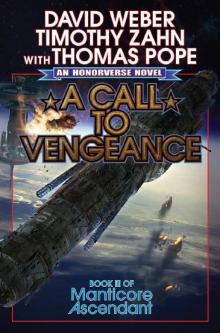 A Call to Vengeance
A Call to Vengeance March Upcountry
March Upcountry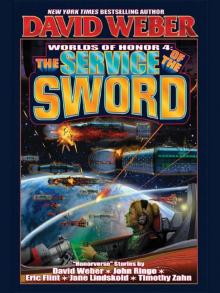 The Service of the Sword
The Service of the Sword Worlds of Honor
Worlds of Honor The Sword of the South
The Sword of the South Mission of Honor
Mission of Honor A Call to Arms
A Call to Arms The Captain From Kirkbean
The Captain From Kirkbean March to the Sea
March to the Sea House of Steel: The Honorverse Companion
House of Steel: The Honorverse Companion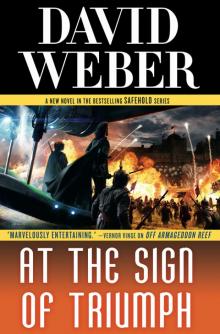 At the Sign of Triumph
At the Sign of Triumph Like a Mighty Army
Like a Mighty Army Heirs of Empire
Heirs of Empire March to the Stars
March to the Stars Oath of Swords
Oath of Swords On Basilisk Station
On Basilisk Station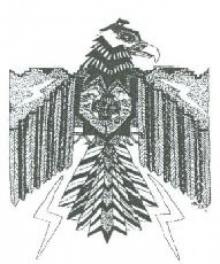 Oath of Swords and Sword Brother
Oath of Swords and Sword Brother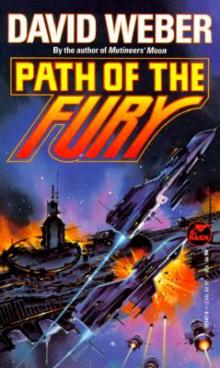 Path of the Fury
Path of the Fury A Mighty Fortress
A Mighty Fortress War of Honor
War of Honor 1633
1633 In Fury Born
In Fury Born Crusade
Crusade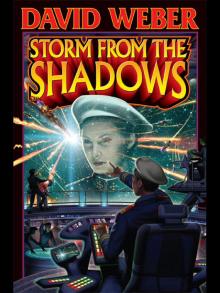 Storm From the Shadows
Storm From the Shadows In Fire Forged
In Fire Forged A Beautiful Friendship
A Beautiful Friendship Into the Light
Into the Light Shadow of Freedom
Shadow of Freedom How Firm a Foundation
How Firm a Foundation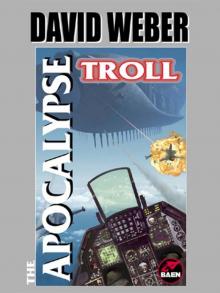 The Apocalypse Troll
The Apocalypse Troll More Than Honor
More Than Honor Crown of Slaves
Crown of Slaves The Gordian Protocol
The Gordian Protocol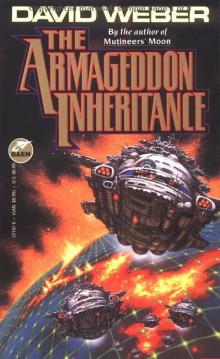 The Armageddon Inheritance
The Armageddon Inheritance Out of the Dark
Out of the Dark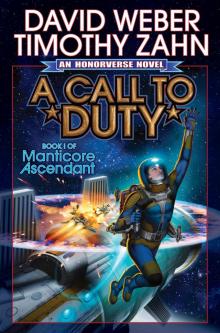 A Call to Duty
A Call to Duty The Shadow of Saganami
The Shadow of Saganami Wind Rider's Oath
Wind Rider's Oath The Stars at War
The Stars at War Uncompromising Honor - eARC
Uncompromising Honor - eARC Fire Season
Fire Season A Rising Thunder
A Rising Thunder Off Armageddon Reef
Off Armageddon Reef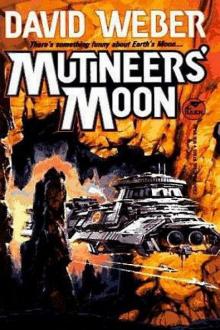 Mutineer's Moon
Mutineer's Moon Hell Hath No Fury
Hell Hath No Fury Worlds of Weber
Worlds of Weber Through Fiery Trials--A Novel in the Safehold Series
Through Fiery Trials--A Novel in the Safehold Series Insurrection
Insurrection By Heresies Distressed
By Heresies Distressed War Maid's Choice
War Maid's Choice At All Costs
At All Costs Shadow of Victory
Shadow of Victory Through Fiery Trials
Through Fiery Trials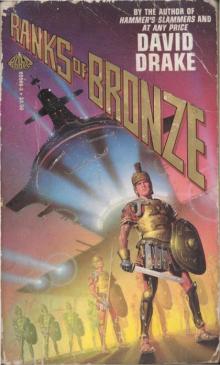 Ranks of Bronze э-1
Ranks of Bronze э-1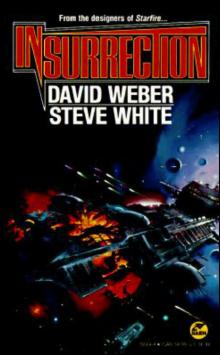 The Insurrection
The Insurrection Safehold 10 Through Fiery Trials
Safehold 10 Through Fiery Trials Old Soldiers
Old Soldiers In Death Ground s-2
In Death Ground s-2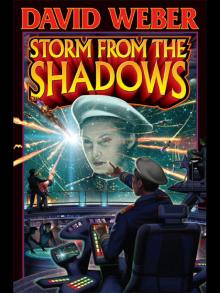 Storm from the Shadows-OOPSIE
Storm from the Shadows-OOPSIE In Enemy Hands hh-7
In Enemy Hands hh-7 Hell's Gate-ARC
Hell's Gate-ARC The Armageddon Inheritance fe-2
The Armageddon Inheritance fe-2 War Maid's choice wg-4
War Maid's choice wg-4 A Call to Vengeance (Manticore Ascendant Book 3)
A Call to Vengeance (Manticore Ascendant Book 3) Heirs of Empire fe-3
Heirs of Empire fe-3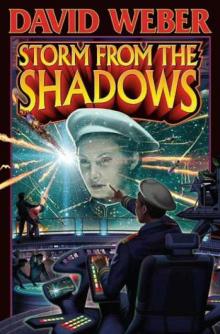 Storm From the Shadows si-2
Storm From the Shadows si-2 Honor Among Enemies hh-6
Honor Among Enemies hh-6 Changer of Worlds woh-3
Changer of Worlds woh-3 Bolo! b-1
Bolo! b-1 Flag In Exile hh-5
Flag In Exile hh-5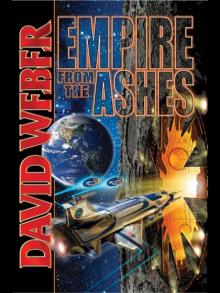 Empire from the Ashes
Empire from the Ashes Cauldron of Ghosts
Cauldron of Ghosts Torch of Freedom
Torch of Freedom March To The Sea im-2
March To The Sea im-2 Shadow of Saganami
Shadow of Saganami In Fire Forged: Worlds of Honor V-ARC
In Fire Forged: Worlds of Honor V-ARC Cauldron of Ghosts (eARC)
Cauldron of Ghosts (eARC)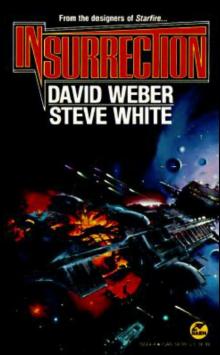 Insurrection s-4
Insurrection s-4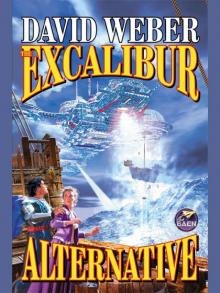 The Excalibur Alternative
The Excalibur Alternative Shadow of Freedom-eARC
Shadow of Freedom-eARC The Short Victorious War
The Short Victorious War Manticore Ascendant 1: A Call to Duty (eARC)
Manticore Ascendant 1: A Call to Duty (eARC) Beginnings-eARC
Beginnings-eARC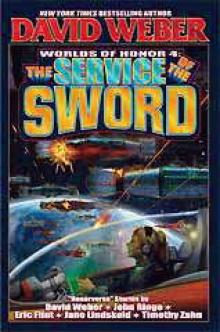 The Service of the Sword woh-4
The Service of the Sword woh-4 The Sword of the South - eARC
The Sword of the South - eARC Treecat Wars sh-3
Treecat Wars sh-3 Worlds of Honor woh-2
Worlds of Honor woh-2 Fire Season sk-2
Fire Season sk-2 March To The Stars im-3
March To The Stars im-3 Echoes Of Honor hh-8
Echoes Of Honor hh-8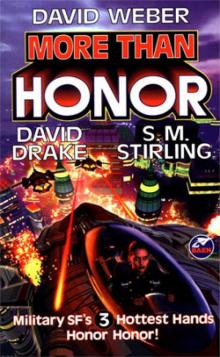 A Beautiful Friendship mth-1
A Beautiful Friendship mth-1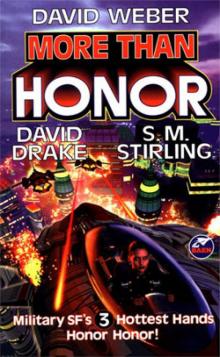 The Universe of Honor Harrington mth-4
The Universe of Honor Harrington mth-4 In Fire Forged: Worlds of Honor V
In Fire Forged: Worlds of Honor V Mission of Honor-ARC
Mission of Honor-ARC March Upcountry im-1
March Upcountry im-1 Sword Brother wg-4
Sword Brother wg-4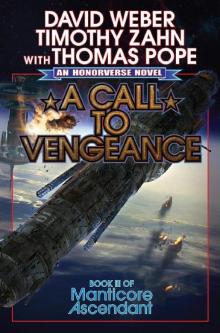 Manticore Ascendant 3- A Call to Vengeance
Manticore Ascendant 3- A Call to Vengeance We Few
We Few Hell's Gate m-1
Hell's Gate m-1 Throne of Stars
Throne of Stars Empire of Man
Empire of Man The War God's Own wg-2
The War God's Own wg-2 Wind Rider's Oath wg-3
Wind Rider's Oath wg-3 A Rising Thunder-ARC
A Rising Thunder-ARC Torch of Freedom wos-2
Torch of Freedom wos-2 War Of Honor hh-10
War Of Honor hh-10 How Firm a Foundation (Safehold)
How Firm a Foundation (Safehold) On Basilisk Station hh-1
On Basilisk Station hh-1 The Honor of the Qween hh-2
The Honor of the Qween hh-2 War Maid's Choice-ARC
War Maid's Choice-ARC Oath of Swords-ARC
Oath of Swords-ARC Oath of Swords wg-1
Oath of Swords wg-1 A Beautiful Friendship-ARC
A Beautiful Friendship-ARC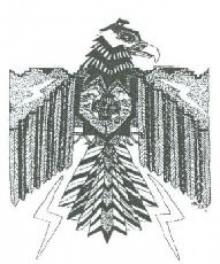 Sword Brother
Sword Brother Shiva Option s-3
Shiva Option s-3 Sir George And The Dragon
Sir George And The Dragon Ashes Of Victory hh-9
Ashes Of Victory hh-9 A Rising Thunder hh-13
A Rising Thunder hh-13 The Road to Hell - eARC
The Road to Hell - eARC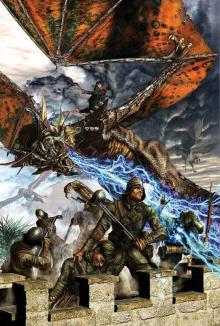 Hell Hath No Fury m-2
Hell Hath No Fury m-2 The Road to Hell (Hell's Gate Book 3)
The Road to Hell (Hell's Gate Book 3)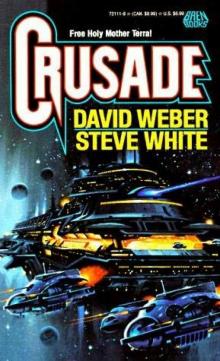 Crusade s-1
Crusade s-1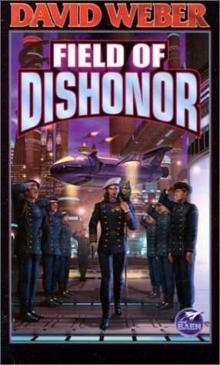 Field Of Dishonor hh-4
Field Of Dishonor hh-4 The Honor of the Queen
The Honor of the Queen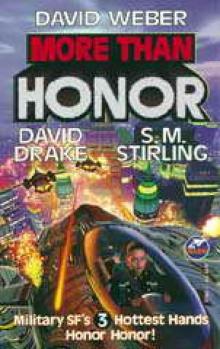 More Than Honor woh-1
More Than Honor woh-1 In Fury Born (ARC)
In Fury Born (ARC) The Warmasters
The Warmasters The Short Victorious War hh-3
The Short Victorious War hh-3 The Shadow of Saganami si-1
The Shadow of Saganami si-1 Empire of Man 01 - March Upcountry
Empire of Man 01 - March Upcountry How firm a foundation s-5
How firm a foundation s-5 Treecat Wars
Treecat Wars